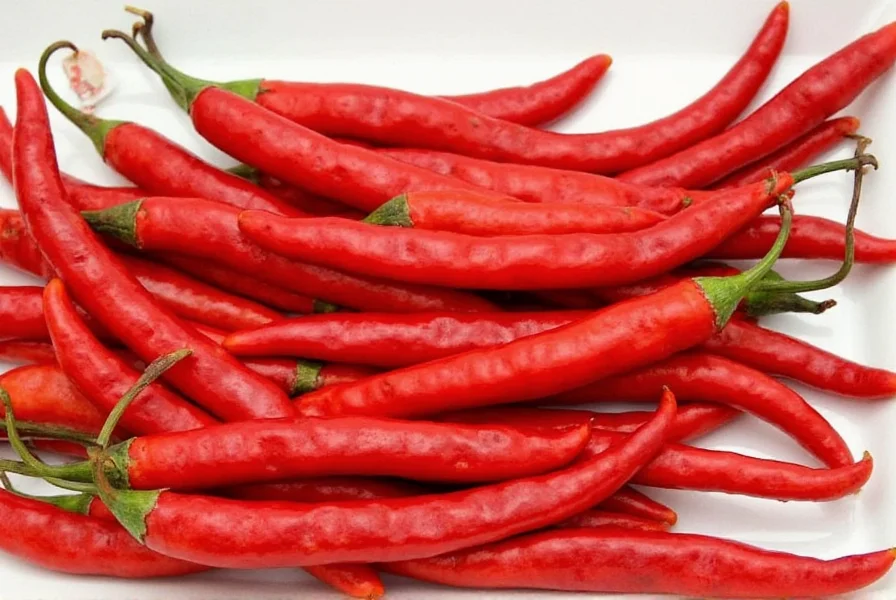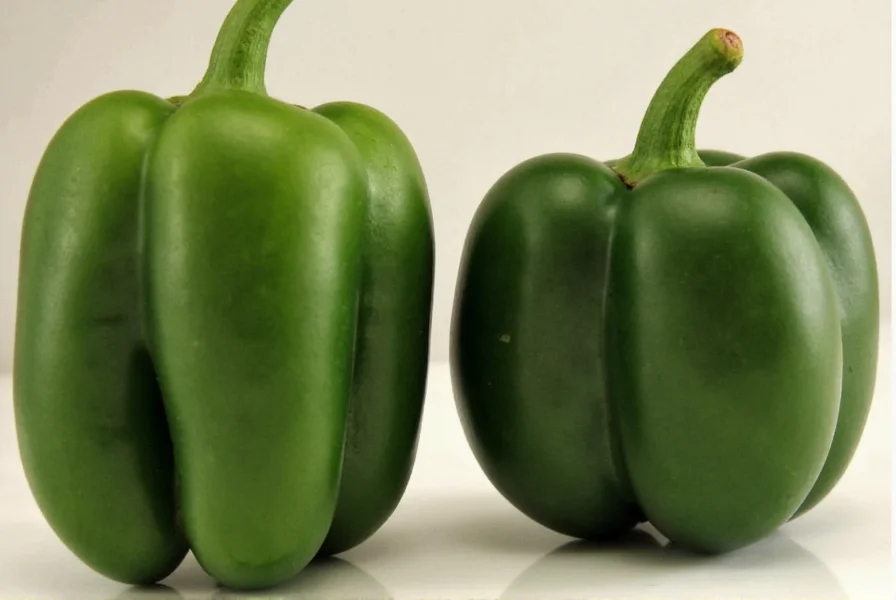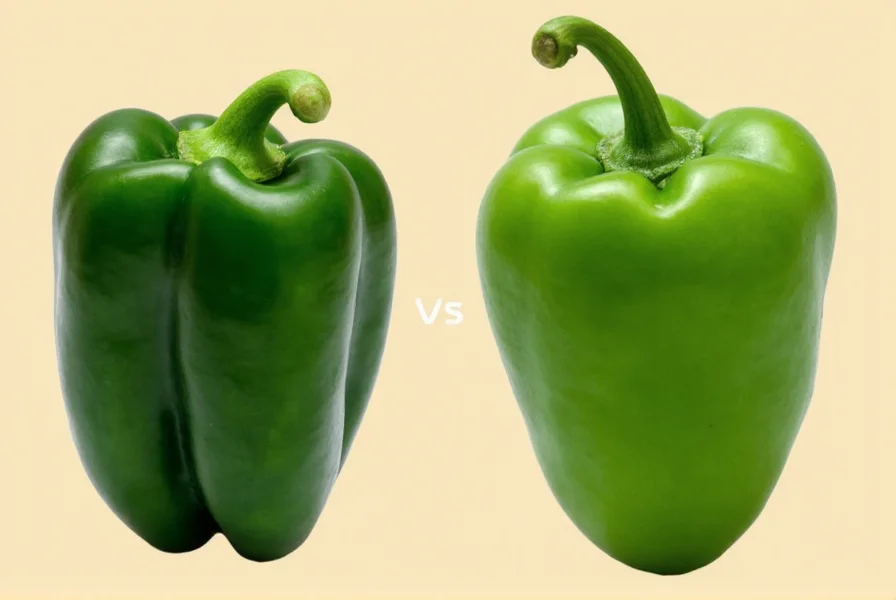No, pasilla and poblano peppers are not the same. They are distinct varieties with different appearances, flavors, and culinary uses. Here's how to tell them apart:
| Feature | Poblano (Ancho when dried) | Pasilla (Chilaca when fresh) |
|---|---|---|
| Size | Large, wide body (~4–5 inches) | Long and narrow (~6–8 inches) |
| Color (Fresh) | Bright to dark green | Very dark green, almost blackish |
| Texture | Smooth skin | Wrinkled and thin |
| Dried Color | Reddish-brown | Dark brown to black |
Poblano Peppers are large, heart-shaped chilies known for their deep green color when fresh and dark red-brown when dried (in which form they're called ancho).
Pasilla Peppers, on the other hand, are long and slender, often mistaken for dried chilaca peppers. When fresh, they have a darker green hue and a more wrinkled appearance.
Flavor Profiles Compared
While both belong to the Capsicum annuum family, their flavor profiles differ like night and day — or maybe dusk and dawn.
- Poblano/Ancho: Earthy, smoky, and slightly sweet with notes of raisin and tobacco.
- Pasilla: More complex — think berry-like sweetness with hints of chocolate, coffee, and prune.
In short: Ancho is like a cozy campfire, while pasilla is a midnight espresso bar.
Heat Level Showdown
Now let's talk spice — literally. The Scoville scale measures chili pepper heat, and here's how these two stack up:
| Type | Scoville Units | Relative Heat |
|---|---|---|
| Ancho (Dried Poblano) | 1,000 – 2,000 | Mild to medium |
| Pasilla | 1,000 – 2,500 | Slightly spicier than ancho |
Bottom line: Neither will blow your socks off, but pasilla can edge out ancho in the spice department.

Common Culinary Uses
Both peppers play big roles in Mexican cuisine, but they shine in different dishes.
Poblano / Ancho Use Cases
- Stuffed with cheese and fried into chiles rellenos
- Blended into sauces like mole poblano
- Used fresh in salsas and soups
Pasilla Use Cases
- Essential in traditional mole negro from Oaxaca
- Blended into rich, dark sauces for tamales and meats
- Rarely eaten fresh due to its bitterness; best dried

Buying Guide: How to Pick the Right One
If you want to cook authentic recipes or experiment with spice, knowing what to look for is key. Here's how to choose between pasilla and poblano peppers:
When Buying Fresh Poblanos
- Look for firm, glossy skins without soft spots
- Choose peppers that feel heavy for their size
- Avoid those with shriveled or wrinkled skin
When Buying Fresh Pasillas
- Opt for smooth texture and very dark green color
- They may have natural wrinkles even when fresh
- Avoid overly dry or brittle specimens
When Buying Dried Versions
- Ancho (dried poblano): Should be pliable, not brittle; avoid moldy spots
- Pasilla: Look for uniform dark brown to black color and a leathery texture
- Smell test: earthy, rich aroma; musty means old
Pro Tips for Cooking with Each
Want to take your culinary game to the next level? Try these pro-level tips:
Cooking with Poblanos
- Roasting: Char over flame or under broiler, then peel and de-seed
- Stuffing: Use a sharp knife to remove core while keeping skin intact
- Substitutes: Anaheim or cubanelle peppers work in a pinch
Cooking with Pasillas
- Soaking: Always soak in hot water before use for better blending
- Pairing: Combines beautifully with cinnamon, cloves, and bitter cocoa
- Blending: Remove seeds and stems for smoother mole sauces

Final Verdict: Are They Interchangeable?
So, after all that, are pasilla and poblano peppers the same? Short answer: Nope. But here's the twist — in a pinch, they can sometimes stand in for each other.
If you're making a sauce that uses either, and only one is available, go ahead and substitute — but be aware that the flavor profile will shift slightly.
Rule of Thumb:
- Use poblano/ancho for mild, earthy richness
- Reach for pasilla when you want deeper, sweeter, more complex flavors
Frequently Asked Questions
Are pasilla and poblano peppers the same?
No, pasilla and poblano peppers are not the same. They come from different pepper varieties. Poblanos are large and heart-shaped when fresh, while pasillas are long and slender. When dried, poblanos become anchos, while pasillas are the dried form of chilaca peppers.
Can I substitute pasilla for poblano in recipes?
You can sometimes substitute one for the other, but be aware of flavor differences. Poblanos offer earthy, mild flavor while pasillas have more complex, berry-like notes with hints of chocolate. For mole sauces, substitutions may significantly alter the traditional flavor profile.
Which pepper is hotter, pasilla or poblano?
Pasilla peppers are slightly hotter than poblanos. Pasillas range from 1,000-2,500 Scoville units, while poblanos (and their dried form, anchos) range from 1,000-2,000 Scoville units. Both are considered mild to medium heat peppers.
What's the difference between fresh and dried forms of these peppers?
Poblanos are typically used fresh (green) or dried (called anchos, reddish-brown). Pasillas are almost always used in their dried form (dark brown to black); the fresh form is called chilaca and is rarely used due to bitterness.
Why are these peppers often confused with each other?
They're confused because of regional naming differences and similar mild heat levels. Some grocery stores mislabel them, and their dried forms can look somewhat similar to untrained eyes.
What are the best dishes for each pepper?
Poblanos excel in chiles rellenos, fresh salsas, and mole poblano. Pasillas are essential for authentic mole negro, rich dark sauces, and tamales where their complex flavor shines.
How should I store these peppers?
Fresh poblanos can be refrigerated for 1-2 weeks. Dried peppers (anchos and pasillas) should be stored in airtight containers in a cool, dark place for up to a year. For longer storage, freeze dried peppers.
Now go forth and spice up your life — just make sure you know which pepper you're reaching for!










 浙公网安备
33010002000092号
浙公网安备
33010002000092号 浙B2-20120091-4
浙B2-20120091-4